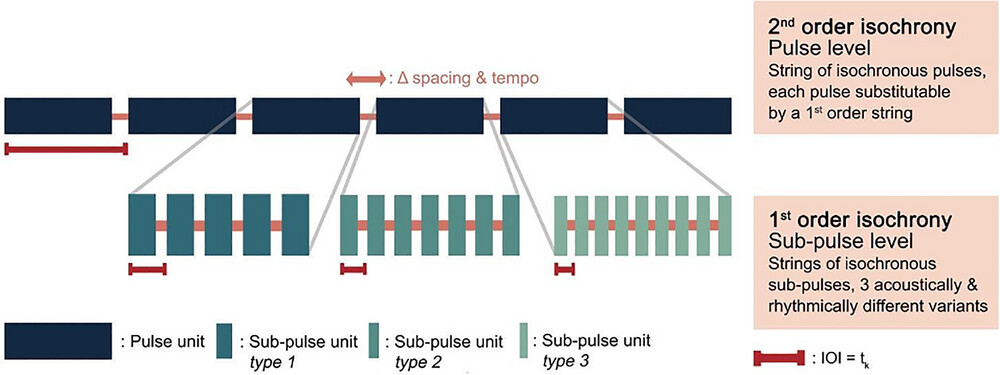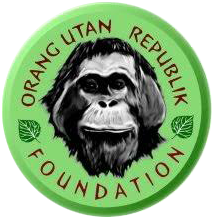In the dense rainforests of Sumatra, a remarkable discovery is reshaping our understanding of communication and its evolutionary roots. Researchers from the University of Warwick have uncovered that wild Sumatran orangutans produce alarm calls with a complex, layered structure previously thought to be unique to human language. This finding, published in the Annals of the New York Academy of Sciences, suggests that the cognitive foundations for recursive communication may have been present in our common ancestors millions of years ago.

Graphic above: Recursive self-embedded isochrony in Bornean male orangutan loud calls, as originally described by Lameira et al. (2024). The findings represent a case of second-order self-embedded isochrony underpinned by applying a recursive operation once.- Open Access- Annals of the New York Academy of Science.
----------------------
Recursion—the ability to embed elements within similar elements, like clauses within sentences—is a hallmark of human language. Consider the sentence: "This is the dog that chased the cat that killed the rat that ate the cheese." Each clause nests within another, creating a hierarchy of meaning. Dr. Chiara De Gregorio and her team observed that orangutan alarm calls exhibit a similar three-tiered recursive structure: individual sounds combine into small groups, these groups form larger bouts, and the bouts assemble into extended series, all with consistent rhythmic patterns.
Moreover, the orangutans modulate these vocalizations based on the perceived threat. When confronted with a real predator, like a tiger, their calls become faster and more urgent. In contrast, ambiguous threats elicit slower, less regular calls. This adaptability indicates a sophisticated level of communication, conveying specific information about the environment.

Graphic above: Recursive self-embedded isochrony in Sumatran female alarm calls. Findings represent a case of third-order self-embedded isochrony underpinned by applying a recursive operation twice. Dark blue blocks represent call units of eight different possible call types. Light-blue blocks containing dark squares represent bouts. Light gray blocks containing light-blue blocks represent series. Orange lines between blocks represent silent intervals. Red lines represent inter-onset tk intervals. Open Access- Annals of the New York Academy of Science.
--------------
This discovery not only challenges the notion that complex, recursive communication is exclusive to humans but also underscores the importance of conserving orangutan habitats. These great apes offer invaluable insights into the evolutionary pathways that led to human language. Protecting their environment ensures the preservation of this living link to our shared past.
*For more information, read the full study here: https://nyaspubs.onlinelibrary.wiley.com/doi/full/10.1111/nyas.15373
--------------
Reference: Lameira, A. R., Hardus, M. E., Ravignani, A., Raimondi, T., & Gamba, M. (2024). Recursive self-embedded vocal motifs in wild orangutans. eLife, 12, RP88348. https://doi.org/10.7554/eLife.88348
